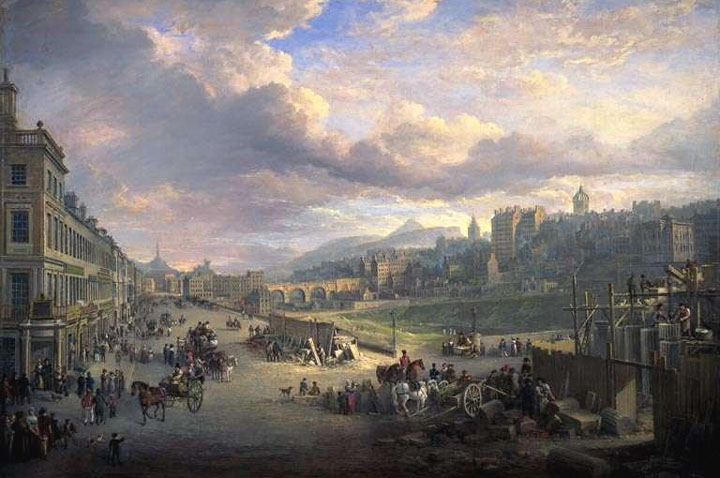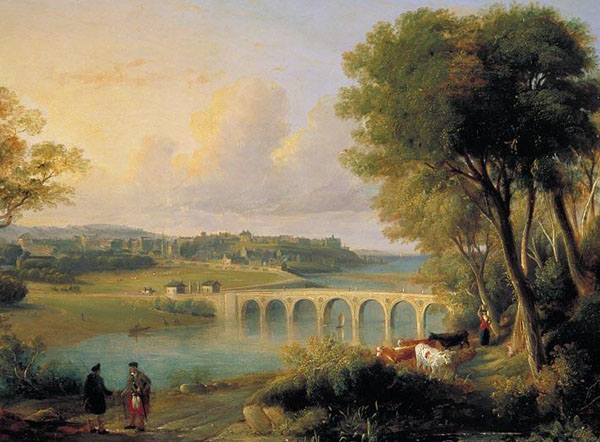The Act of Union in 1707 united the government of Scotland with that of England, but it was not a union of equals. Scotland was very much smaller, poorer and less developed economically. Scottish trade now had to compete with that of England, though a few goods were temporarily protected by tariffs.
Scottish towns were many, but small. They were different from English towns, architecturally, administratively, and culturally. But during the long eighteenth century they changed rapidly, so that by the 1820s there was much less distinction between a small English town and a small Scottish one. Changes which had started in the 1660s in England happened later in Scotland. Development began slowly from the 1680s, and continued faster from the 1720s in Edinburgh. But in small provincial towns it was the 1750s before architectural, social and economic changes really took off. The second half of the century must have been a stimulating and challenging period to live through.

Painting by Alexander Nasmyth (1758-1840)
of Princes Street, Edinburgh, in 1825, during the construction of the
Royal Institution.
© SCRAN/National
Galleries of Scotland
Although Scotland in the seventeenth century had already been more urbanised
than many other European countries, changes in agricultural practices
meant that the eighteenth century saw more and more people leaving the
countryside and settling in towns. This could only be achieved by a partnership
between the countryside and the towns. Farmers had an incentive to improve
their methods and produce larger surpluses because there was a growing
urban market to buy them. Towns contained more and more people who did
not even keep hens or grow vegetables in the back garden, so could not
survive without an agricultural hinterland to supply them, and better
roads and bridges to transport food to the towns.
Mediaeval practices, including
the monopolies enjoyed by royal burghs, and by burgesses within burghs,
were being challenged, and would eventually wither away despite determined
attempts to preserve the status quo. As economic patterns changed,
some burghs flourished while others failed to thrive. By the eighteenth
century a number of small towns were clearly in decline. A good example
is the string of little burghs along the south coast of Fife, which had
exported coal and salt throughout the North Sea and the Baltic. Not only
was trade developing with the West Indies and North America, but ships
were getting larger and demanding better harbour facilities. While there
was still a flourishing coastal trade, many of the smaller east coast
harbours failed to keep up with the times, and trading burghs declined
into fishing villages.
Banff
Bridge, built by John Smeaton in 1779, painted by John Fleming (1792-1845),
c.1825.
©
SCRAN/National Galleries of Scotland
Travel was improving in speed and comfort,
and patterns of transport changing. By the end of the period fewer towns
were needed to serve travellers, who could cover far greater distances
in a day. Education was changing and the professions becoming increasingly
influential. More Scots were leaving home, for professional training,
or for military, naval or colonial service, and some returned with money
and new ideas.
Many small towns had their economic and cultural heyday in the later eighteenth and early nineteenth century, and we can still see evidence of this period in their surviving architecture and townscape. In larger and industrial towns, however, much of the evidence has been obliterated or obscured by later developments.
| Next | ||
